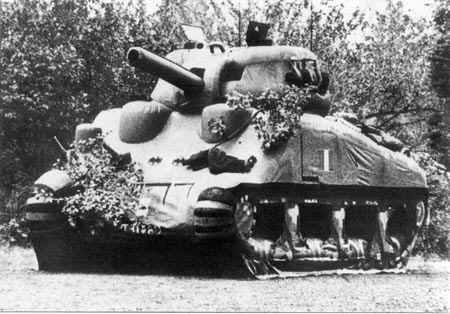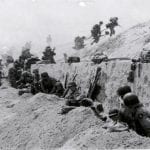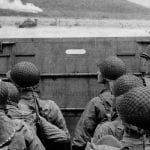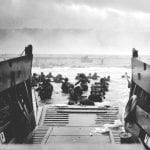The following article on Operation Titanic is an excerpt from Barrett Tillman’ D-Day Encyclopedia. It is available for order now from Amazon and Barnes & Noble.
Overlord remains one of the classic examples of effective strategic deception. Allied planners worked tirelessly to mislead the Germans about the intended landing zone on D-Day, attempting to focus their attention on the Pas de Calais rather than Normandy. False radio transmissions from a nonexistent army ‘‘led’’ by Lt. Gen. George S. Patton constituted one example of signals intelligence inserted to conceal the Allies’ actual troop strength. Other means included compromising every German intelligence agent in Britain, ‘‘turning’’ the enemy spies and forcing them to send misleading reports to their handlers. Those efforts were successful; by May 1944 Berlin was convinced that the U.S. Army had seventy-nine divisions in Great Britain compared to fifty-two actually deployed there. These actions were collectively known as Operation Titanic
Allied planners employed subtlety in leaking some schemes to the Germans. One example was the Zeppelin Plan, which theoretically called for a major offensive from Italy into the Balkans in the event that Overlord was canceled or delayed. As is often the case in military planning, Zeppelin was ‘‘modified’’ in May 1944 to target southern France, employing false radio traffic, double agents, and genuine requests for information or support from neutral nations. However, Zeppelin largely failed to convince German headquarters that the blow would fall anywhere but the Channel coast.
Other ‘‘genuine’’ deception efforts included disproportionate targeting of German facilities outside Normandy, typically two missions elsewhere for each mission in northern France. This would give more flexibility for Allied landing ships and landing craft.
Among physical deception methods was the creation of thousands of imitation vehicles and aircraft, all located so as to convince the Germans that the invasion would occur in the Pas de Calais. Between them, the Royal Engineers and their American counterparts created tanks, trucks, artillery, and aircraft, which were arrayed in marshaling areas near ports on the east coast of England. Rubber decoys could be inflated by compressed air, while others were quickly assembled from wood and canvas. A ‘‘fighter squadron’’ of twenty-four airplanes could be built by a platoon of engineers in two weeks, including imitation hangars and support equipment.
Operation Titanic caused widespread confusion among German forces when rubber dummies were dropped throughout Normandy. Generically named ‘‘Rupert,’’ the imitation paratroopers added to the uncertainty already established the night of 5–6 June, when genuine airborne forces were landed far from their intended drop zones. Consequently, the defenders had no clear picture of what the opening moves of Overlord would be.

This article is part of our larger selection of posts about the Normandy Invasion. To learn more, click here for our comprehensive guide to D-Day.
 |
 |
 |
This article on Operation Titanicis from the book D-Day Encyclopedia, © 2014 by Barrett Tillman. Please use this data for any reference citations. To order this book, please visit its online sales page at Amazon or Barnes & Noble.
You can also buy the book by clicking on the buttons to the left.
Cite This Article
"Operation Titanic: D-Day and Deception" History on the Net© 2000-2024, Salem Media.
April 19, 2024 <https://www.historyonthenet.com/operation-titanic>
More Citation Information.










